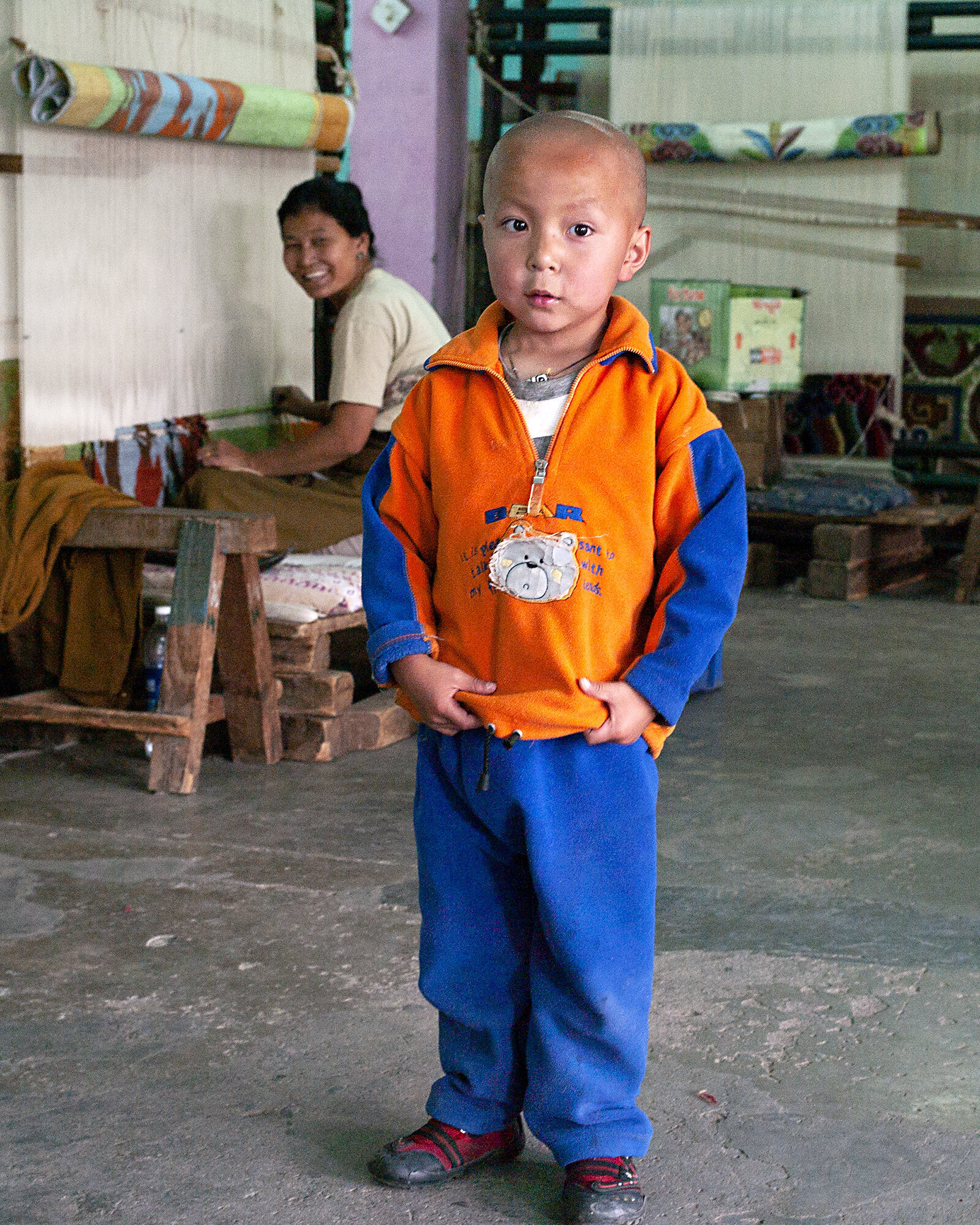TIBETAN PORTRAITS
People in exile
“Wherever Tibetans are, whether born in Tibet or outside, we all have a body of blood, flesh and bone that is Tibetan. The name Tibetan cannot be obliterated from the world while we still live.
”
When it became clear that Tibetan refugees would not be able to return home soon, survival became their priority. The Dalai Lama saw the need for more permanent rehabilitation to prevent the loss of Tibetan culture if the refugees disbanded and travelled in different directions to settle. He made an appeal to Prime Minister Jawaharlal Nehru of India who agreed to create autonomous settlements for Tibetan refugees within India. Developing settlements was not an easy task. The land allocated was often covered with dense forest and vegetation, which the Tibetans - mountain people - had to clear. In one settlement, elephants still eat the young crops!
Sweater seller
There are 54 Tibetan settlements in India, Nepal and Bhutan which are sustained by agriculture, handicraft or small-scale industries. Here Tibetans speak their own language, attend their own schools, operate their own clinics and hospitals, have crèches for the young and homes for the elderly, practice their own religion and celebrate their own traditions in isolation from the host country. Many of the larger settlements have nearby monasteries with monks and nuns. Settlements were designed with the intention to be self-supporting communities, serving the needs of first- and some second-generation refugees. Settlers found that they needed to supplement family income, so today, the majority of Tibetans in Indian settlements sell sweaters in train and bus stations throughout India during the winter months. With new births, new refugee arrivals and ageing populations requiring greater health care, many settlements are no longer financially self-sufficient. Furthermore, the limited economic resources and opportunities within the settlements cannot absorb the new generation of educated refugees graduating each year from the Tibetan schools.
Not all Tibetans who fled Tibet went to settlements to live. They live and work near other Tibetans in towns and cities across India and Nepal.
Jeweler, Dharamsala
Mother and son in front of their house in a Tibetan Settlement in India
Celebration
Woman in front of her altar
Woman with mala, prayer beads
Carpet weavers
First shop keeper in Ladakh
Noodle-maker and son














